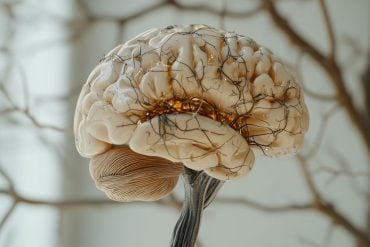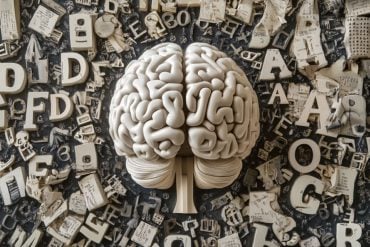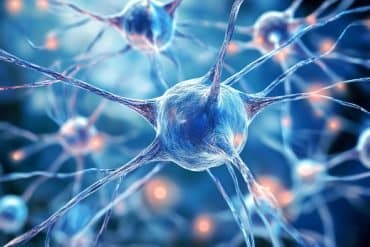Summary: Brain areas associated with pain processing do not function correctly in those with fibromyalgia, a new study reveals.
Source: RUB
Fibromyalgia is a mysterious chronic pain disorder that is difficult to treat. Its causes are also still largely in the dark.
A study conducted by the team at the Clinic for Psychosomatic Medicine and Psychotherapy at Ruhr University Bochum, Germany, provides evidence that certain brain areas involved in processing pain don’t function normally in fibromyalgia patients. In healthy people, they ensure that pain that we can control is easier to bear.
The study found that these brain areas showed altered activity in patients with fibromyalgia.
The research team headed by Professor Martin Diers published their findings in the journal NeuroImage: Clinical .
Controlling the off switch for heat pain
The degree to which we experience pain and the restriction caused by it depend largely on how we perceive it. If we have the feeling that we can control the pain and shut it down ourselves, for example, we will tolerate it better than if we feel at its mercy.
“For people with chronic pain, the inability to control repeated attacks of pain is one of the most significant causes of impaired quality of life,” explains Benjamin Mosch, lead author of the study.
“And yet, the underlying neural mechanisms have so far mainly been studied in healthy controls.”
In the current study, the team compared two female cohorts: 21 healthy participants and 23 fibromyalgia patients. Both groups were exposed to heat pain while their brain activities were monitored by functional magnetic resonance imaging.
In one experimental run, the participants were able to stop the pain stimulus themselves. In another run, a computer controlled the start and end of the stimulus.
“We kept the duration of the stimuli terminated by the computer the same on average as the stimuli terminated by the test subjects,” says Martin Diers.
Cognitive resources are impaired
When women in the healthy control group were able to terminate the pain stimulus themselves, a number of mainly frontal brain areas were activated that seem to play an important role in modulating pain. This observation is consistent with previous studies involving healthy subjects.

“Interestingly, however, we didn’t detect any such activations in our patient group,” points out Martin Diers.
“This can serve as evidence for impaired pain processing among patients with fibromyalgia. It indicates that the cognitive resources for dealing with acute pain are impaired in these patients.”
Fibromyalgia
Fibromyalgia was added to the World Health Organisation’s catalog in 1994. An estimated two percent of the German population is affected, 90 percent of them are women. The disorder is characterized by recurring pain as well as various other symptoms, including sleep disturbances, depressive moods, chronic fatigue and digestive problems. On average, it takes 16 years before a diagnosis is made.
About this pain research news
Author: Meike Driessen
Source: RUB
Contact: Meike Driessen – RUB
Image: The image is in the public domain
Original Research: Open access.
“Neural correlates of control over pain in fibromyalgia patients” by Martin Diers et al. NeuroImage: Clinical
Abstract
Neural correlates of control over pain in fibromyalgia patients
The perceived lack of control over the experience of pain is arguably-one major cause of agony and impaired life quality in patients with chronic pain disorders as fibromyalgia (FM). The way perceived control affects subjective pain as well as the underlying neural mechanisms have so far not been investigated in chronic pain.
We used functional magnetic resonance imaging (fMRI) to examine the neural correlates of self-controlled compared to computer-controlled heat pain in healthy controls (HC, n = 21) and FM patients (n = 23). Contrary to HC, FM failed to activate brain areas usually involved in pain modulation as well as reappraisal processes (right ventrolateral (VLPFC), dorsolateral prefrontal cortex (DLPFC) and dorsal anterior cingulate cortex (dACC)).
Computer-controlled (compared to self-controlled) heat revealed significant activations of the orbitofrontal cortex (OFC) in HC, whereas FM activated structures that are typically involved in neural emotion processing (amygdala, parahippocampal gyrus).
Additionally, FM displayed disrupted functional connectivity (FC) of the VLPFC, DLPFC and dACC with somatosensory and pain (inhibition)-related areas during self-controlled heat stimulation as well as significantly decreased gray matter (GM) volumes compared to HC in DLPFC and dACC. The described functional and structural changes provide evidence for far-reaching impairments concerning pain-modulatory processes in FM.
Our investigation represents a first demonstration of dysfunctional neural pain modulation through experienced control in FM according to the extensive functional and structural changes in relevant sensory, limbic and associative brain areas.
These areas may be targeted in clinical pain therapeutic methods involving TMS, neurofeedback or cognitive behavioral trainings.






